Rip and tear into some fun sequels
By Humanity 12 Comments

In the past few weeks I’ve been playing the sequels to two games I greatly enjoyed in the past few years which both incidentally involve the ripping and tearing of your foes in comically graphic ways. The two games in question - The Surge 2 and Doom Eternal. While very different in nature, I found that both games shared a lot of common traits of the proverbial sophomore slump. That isn’t to say I thought these were bad games. In fact I had a fair bit of fun with both of them. They just weren’t the sequels that I personally wanted.
The Surge is a game that I loudly champion when given the chance like a crazy man on a street corner while everyone gives me a wide berth, hurriedly passing by lest they catch anything from mere proximity. It’s a souls-like game with all the traditional trappings but also many unique and fun mechanics of it’s own. While I greatly enjoyed The Surge there were plenty of things I thought a potential sequel could do so much better. If only more people played this I thought! Well somewhat surprisingly the game did get a numbered sequel and after having played it I can safely say it was your typical case of bigger but not necessarily better. The original worked so well because of it’s clever way of interweaving the narrative into the gameplay. The fact alone that you start the game as not just your everyday Gordon Freeman, but someone bound to a wheelchair was a surprising little twist that I’ve never seen in a game before. There is something to be said about little flourishes that are inconsequential to the minute to minute gameplay, but add a great deal to the overall experience when you take a step back and look at the whole picture. You work in a factory so you get a powerful exo-skeleton. Your weapons are basically power tools very much like how Dead Space did it. Your enemies are other employees whose brain-chip got fried in the titular surge at the outset of the game. The levels are different areas of the factory which you must escape and your bosses are typically large industrial robots now gone rampant. It all just clicked.
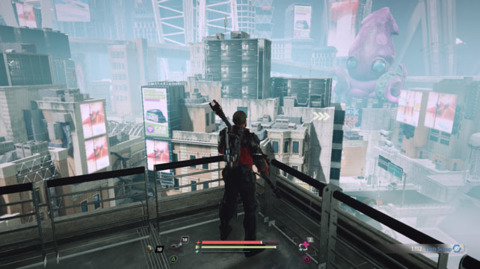
The Surge 2 foregoes all this in favor of giving you more toys to play with. You’re now in a city and there are different factions you’ll inadvertently come to slaughter by the hundreds but the reasons for how and why aren’t as neatly buttoned up. Why do all the citizens of this city have extremely high grade industrial exo-skeletons? Where did they get all these flamethrowers and energized staffs with spinning saws? The city itself is more diverse than the very samey looking industrial corridors of the first game, but apparently the developer Deck 13 wasn’t up to the task of making it look actually interesting. At the outset of the story a plane with a nano virus crashes into Jericho City and after spending two months in a coma you awake in what looks like the aftermath of a nuclear fallout. Two months and the city is nearly in ruins, and this is BEFORE the nano virus properly activates. The repeating look of grey rubble is pervasive throughout your stay. It’s a cheap and easy way to not model an actual city, but it also means that despite this ostensibly much more interesting setting, you are actually just going through different biomes of devastation. The docks are rusty metal, the city is crumbling concrete and the sewers are darkened caves with the familiar sci-fi plating that spans Jericho from top to bottom. There is one park level that breaks away from the norm but even there you can’t shake the feeling of this limited asset re-use going on. The level design itself is quite clever with many twisting pathways and shortcuts that lead back to previous areas. But like I mentioned above, it seems to be more for the sake of more. There are so many shortcuts that half of them end up feelings absolutely superfluous. Oftentimes because everything still looks so very similar and without character, you’ll open up one of these shortcuts and not even recognize the area you’ve come from because unlike the Souls games there is very little instantly recognizable architecture to be found.
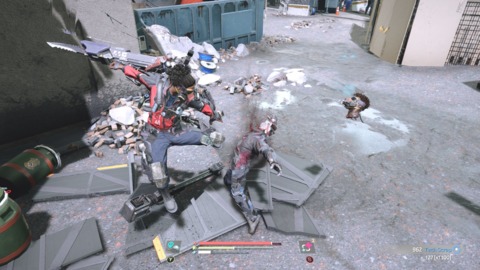
The combat which was excellent in the first game feels freshened up and faster in the second. Unfortunately a lot of the tougher enemy encounters revolve around a brand new directional parry mechanic. Parrying is a divisive tactic simply because you have to be actually really good at it to make it work, which is why a lot of people opt out favoring a more defensive strategy. A missed parry can have devastating effects and in a Souls like game this risk can be especially punishing. It doesn’t help that the parry here is tied to animation, which means it’s not just a split second button press. You need to anticipate both the incoming attack timing as well as your own characters physical response timing. These windows can feel wildly inconsistent across the varying enemies you encounter. There were some who I could parry 95% of the time with ease while others I struggled with to the very end. It’s a mechanic you could potentially ignore if not for the fact that nearly all the bosses in The Surge 2 require some form of parrying unless you want to really slug it out for a while. I should know because I was so bad at directional parries during my first major boss encounter that I decided to dance around him and take potshots when possible. After an incredibly long and ardous fight I felled the beast without engaging once with this essential risk-reward mechanic. Dozens of hours later I faced this same boss in NG+, now a lot more comfortable with bouncing attacks back at my enemies, and this boss was a breeze and much easier when tackled the way the developers intended. The big difference was not only the hours upon hours of practice I’ve had, but that my health and stamina pool both allowed me to engage the boss this way without it spelling certain doom if I messed up. At the beginning of the game you have so little health and limited amounts of healing that missing one of these attacks can literally lead to death. It’s scary. Now that I had a much bigger safety buffer, missing Little Johnny’s mechanical tentacle swipes cost me a tiny fraction of health compared ot my first encounter. Even if I got exceedingly sloppy I’d acquired an implant that gave me health back for sustained damage that let me easily build that green bar back up to full. During my final hours with the game I would parry quite often because I didn’t feel the danger of missing. I understood what the developers were going for, but I also saw how they were unable to perceive the shortcomings of this system for newcomers.
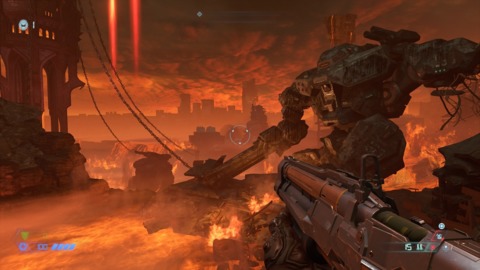
Which in a weird way brings me to Doom Eternal. The opinions on this game seem to sway in two polar opposites. Those who love it and those who feel at odds with the systems. At first I was leaning heavily into the latter. With time I’ve come to understand it’s mostly a case of a bad on-ramp. Eternal starts with all cylinders firing. There is a very short refresher course on what each button does and then the combat arenas begin in earnest. In no time at all the game introduces bigger enemies like the spidery Arachnotron and shows you their weak points to exploit. There is an overall very welcome transparency to the combat mechanics. Game director Hugo Martin even mentions in one interview or another that they didn’t really want the player to focus on puzzling out HOW to kill bad guys - they were going to show you exactly how to do it so you can go on have the fun experience of getting on with it. Yet many players felt constrained by these systems as if the game was actually limiting a lot of your options by forcing hard counters you needed to exploit. In turn many players that finished the game and loved it would argue that you don’t actually need to strictly adhere to everything the game tells you to do, that there is a lot of flexibility to the combat system and how you approach each enemy. This is true.. tt just takes a while to get there. At the outset you get a shotgun and a rifle and if you plan to survive you actually have to strictly adhere to the rules because you don’t have any other options. You’re not going to take out the flying Revenant with ease without taking out both his cannons with only the rifle and combat shotgun. You could lob a sticky grenade but it’s not ideal. This is a bit of a forced learning curve - the game is forcing you to do this knowing you have no other option in order to drill into the player the rock-paper-shotgun approach to combat. Later on I hardly ever bothered with this tedious scoping in because I would use my super shotgun and meathook right into a Revenants face. Similarly I stopped caring about a lot of traditional weak points opting out for weapons with higher firepower or knockback. The problem is you have to get there, and those possibilities all open up somewhere past the midpoint of the game. You’re fairly squishy throughout but especially so at the beginning. The first half of your demon slaying journey really feels quite frantic as you’re dancing around all these fiends with a limited arsenal. It’s a lot less fun and creative than the latter half of the experience where you get to choose how you want to engage the enemies and the “combat puzzle” becomes a lot more interesting with the additional puzzle pieces filling out the picture. You’ll annoyingly still take a beating from the most basic fodder types if you’re not careful, but getting out of bad situations is a lot easier as well.
The combat makes perfect sense when you look at it back from the perspective of a powered up beast you become by the end. There is actually a ton of freedom in how you tackle demons. Apart from the Marauder who forces your hand, you’re given so many options that there is always some way to make things work in your favor. So it’s understandable why a lot of folks get turned off early on when the game simply isn’t as fun. Having to run around wildly with just the combat shotgun in the first few levels doesn’t make you feel like a powerful demon slayer. The fact that you take so much damage from even the simplest imps similarly saps the power fantasy right out of Doom. And this is Doom after all. You’re meant to be an unstoppable power house but at best the Doom Marine feels like a glass cannon. Weapons and abilities should have been introduced much quicker so you can, as Hugo describes it, get quicker into the fun-zone.
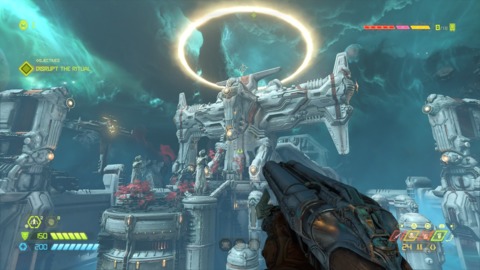
That said, while the combat definitely picks up the further you go, I still don’t think this is a “perfect shooter” as some would say. Doom 2016 while slower had a lot more charm, a lot more character, and a smoother progression throughout. Eternal puts the pedal to the metal from the start and it unflinchingly stays in that high gear to the very end. The last act of the game starts to feel like a bit of a slog and the final boss quantifies this feeling by a hundred. If you weren’t feeling even a little tired of Doom, then that final encounter will try it’s hardest to wear you out. It’s not even a complicated or interesting challenge - you are presented with a towering meat bag that you have to dump copious amounts of ammo into, twice. You would maybe get some satisfaction from the absolute power fantasy of being able to use your insta-kill sword to your hearts delight if it weren’t for the length of the encounter. For the developer this was meant to be the final showcase of their really great damage tech that you’re witness to throughout the many hours of demon dismemberment. Perhaps they were a little too close to it all and forgot to take a step back to see that ultimately it wasn’t all that fun to play. Some other nitpicks is the level design which is now completely divorced from any sort of game-world reality and is just full on arcadey arenas with floating platforms and skulls throughout. It no longer feels like any one place but rather a collection of fighting pits. This was always the case with Doom but Eternal does nothing to mask it. The platforming while not ideal I didn’t really mind but the swimming sections with acid are all awful, not fun or creative in any way, and feel like someone lost a bet and they had to put them in somewhere. Thankfully much like the purple goop they show up very rarely. All the boss encounters are bad with maybe the exception of the Doom Hunter who becomes a regular enemy. The second to last boss is alright but homing rockets made the fight fairly trivial, but by that point of the game I welcomed the easy win. The lore, which I actually tried to study, is deep in the worst possible way and for all it’s wordiness is barely represented in the actual game. I kept waiting for some story twist, something, anything really.. but it’s very straightforward from start to finish. I can only imagine they will release the bridge between Doom 2016 and Doom Eternal as some sort of lost levels or worse yet DLC.
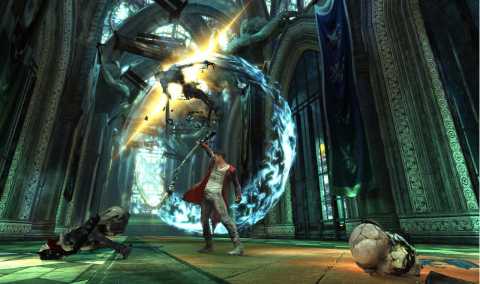
Yet despite all that there are those that love Eternal from start to finish. This made me wonder why someone would be so uncritical of these obvious shortcomings, and where have I seen this before? The answer is Devil May Cry 5. I’ve observed that there is a certain subset of players that simply love mechanics above all else. DMC5 was a game that some fans of the series loved and proclaimed the best character action title ever made. They didn’t see a problem with the level design being repetitious or the story, because those things don’t matter in light of the combat which they placed above all else. Doom Eternal is like that age old argument of DmC and DMC. While DmC might not be as nuanced as the canonical DMC entries, I found the overall package not only more compelling but also more inviting to play - in part because it wasn’t as complicated. People that love Doom Eternal love the combat and they will continue playing the game over and over because that is their main priority - mechanics, raw gameplaty. For those people I imagine there wasn’t a single second of the game that felt like a slog, because every new room, every new encounter, was another opportunity to engage in the fun of simply killing demons, and thats great. For those like myself that are never going to be that skilled or consumed with just gameplay, there needs to be more to fill out the corners and Eternal just doesn’t provide that. It’s one hell of a ride and I enjoyed large chunks of it, but ultimately it’s singular focus wore me out long before the credits rolled.
